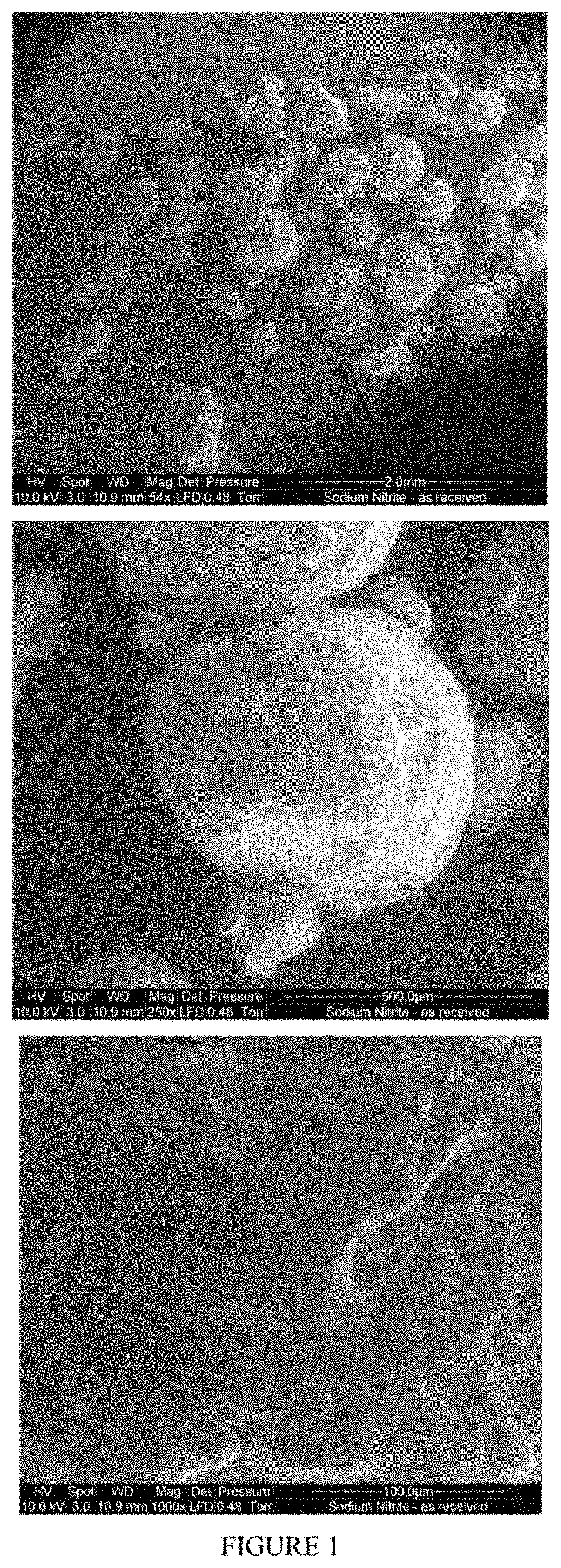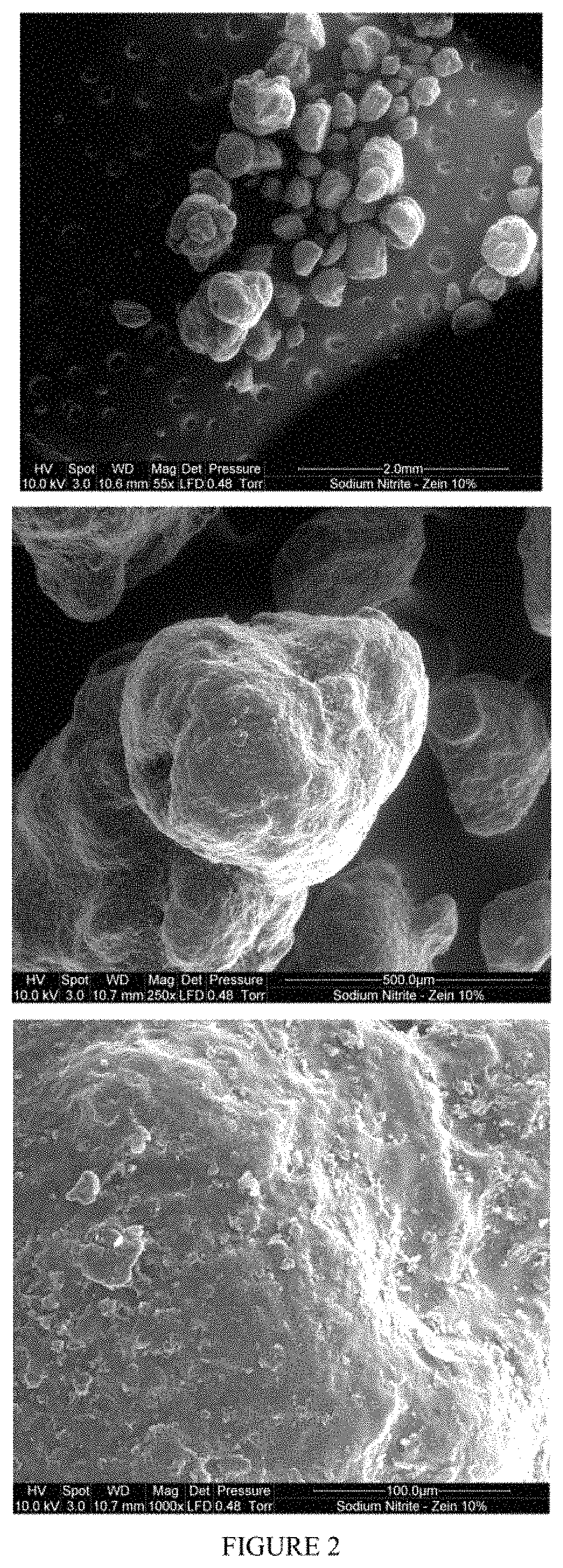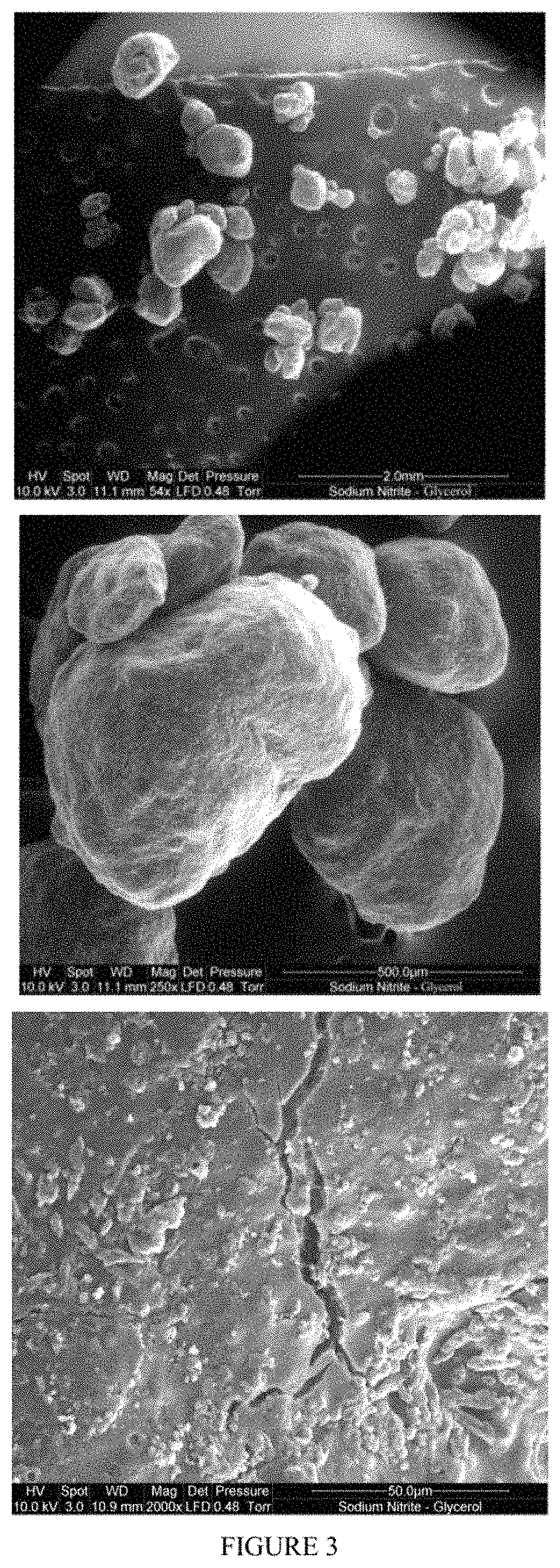Nitrite microencapsulation, and uses of microencapsulated nitrite in the manufacture of pest baits
a technology of nitrite salt and encapsulation, which is applied in the field of microencapsulation technology, can solve the problems of feral pigs adversely affecting agricultural production, environmental, biodiversity, and agricultural damage, and achieve the effects of improving stability, improving encapsulation coverage, and improving the delivery form of sodium nitri
- Summary
- Abstract
- Description
- Claims
- Application Information
AI Technical Summary
Benefits of technology
Problems solved by technology
Method used
Image
Examples
example 2
on of Encapsulated Bait Composition
a) Formulation Components
[0122]The ratio of these ingredients is:
[0123]
Sodium Nitrite 100%95% End microsphereEncapsulates as a coat one -as a % of the Sodium NitriteEthanol50.000%EvaporatedWater12.500%EvaporatedZein12.375%Total of 5%PVP 0.125%
b) Formulation Process (Coated Pan)
[0124]Technical grade prilled sodium nitrite—(200-800 μm) was obtained from BASF. The sodium nitrite is heated in a coating pan at 45 deg C. for 30 minutes with the pan being jogged during this process. At the end of this process, the moisture content should be <0.1% w / w.
[0125]The encapsulant comprising zein and PVP (Polyvinylpyrrolidone) is mixed / dissolved in binary solvent 70% ethanol / 30% water.
[0126]The coated nitrite is then formulated with a palatable carrier that further protects the nitrite from degradation and offers the mixture in a palatable form for the feral pig to eat. In this carrier bait consists of peanut paste and peanut oil mixed with dried ground cereals i...
example 3
on of Encapsulated Microspheres (Zein / PVP Based)
Production Method for Spheres:
[0133]Prilled sodium nitrite with a moisture content of less than 1% (typically around 0.2 to 0.3%) and a particle size distribution of 180 to 800 microns is suspended as a fluidised bed in a stream of air drawn into the coating apparatus at 80% relative humidity at 12° C. and which is pre-heated heated to 40 to 45° C. Coating material for zein is prepared by fully dissolving 10% w / w zein protein in a binary solvent comprising 70% ethyl alcohol and 30% deionised water and containing polyvinyl pyrilodone (PVP) as a plasticiser to form the coating solution.
[0134]The coating solution is sprayed on the fluidised bed of sodium nitrite granules initially at a low rate initially and then at a progressively increasing rate to provide an even and uniform coating layer until 2.5 to 25% coating of the particles with zein is achieved, typically 5% w / w of the finished product. The finished coated microsphere product th...
example 4
uction Using Microspheres from Example 3
[0135]A palatable bait containing sodium nitrite is prepared by mixing cracked wheat, fine crushed maize, white wheat flour, sugar, iron oxide (colourant) and sodium carbonate (as a pH modifier) until uniform colour is achieved in a ribbon blender. Then the required quantity of microencapsulated sodium nitrite microspheres is added and fully mixed with the dry ingredients before the whole mixture is bound together with a quantity of ground peanut paste to achieve a semi solid paste like consistency at room temperature.
PUM
 Login to View More
Login to View More Abstract
Description
Claims
Application Information
 Login to View More
Login to View More - R&D
- Intellectual Property
- Life Sciences
- Materials
- Tech Scout
- Unparalleled Data Quality
- Higher Quality Content
- 60% Fewer Hallucinations
Browse by: Latest US Patents, China's latest patents, Technical Efficacy Thesaurus, Application Domain, Technology Topic, Popular Technical Reports.
© 2025 PatSnap. All rights reserved.Legal|Privacy policy|Modern Slavery Act Transparency Statement|Sitemap|About US| Contact US: help@patsnap.com



